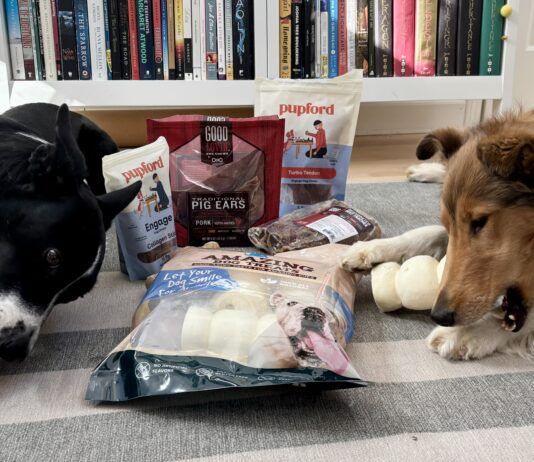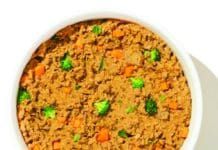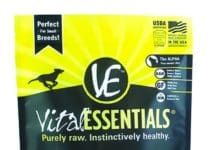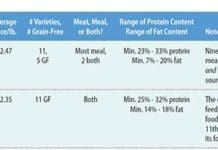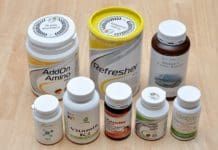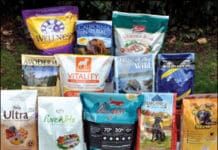What Fruits Can Dogs Eat?
Unfortunately, no fruit is good for dogs to eat because of how high in sugar most varieties are, as Dr. Wismer explains. While fruits like pears and pineapple do provide nutrients to dogs, Dr. Wismer advises that fruit should only be given to your dog as an occasional treat. In other words, it should not make up a significant part of your dog's diet.
10 Human Foods for Dogs
There are foods people designate strictly for human consumption which our dogs could (and arguably should) be eating regularly too. Yogurt and eggs top that list. Raw honey is a well-known and tasty way to treat canine ailments like kennel cough and topical wounds. And do you personally know a dog who can resist a scoop of peanut butter when presented with one? These are the more widely accepted human foods for dogs, but there are plenty of other great foods to taste-test with your dog.
Dog Ice Cream Treats
Ice cream, of course, contains milk. And just like humans, some dogs (not all) are lactose-intolerant. If you feed milk to a lactose-intolerant dog, he may experience diarrhea, painful gas, or vomiting. Of course, ice cream is a treat, not a diet staple, so start by giving your dog no more than a spoonful, and wait for a day to see if he has any negative response to the frozen dessert. As long as he does not, he should be able to enjoy a prudent amount as an occasional treat.
Frozen Dog Treats: How to Make Pupsicles for Your Dog
With high temperatures across the country, pupsicles are an easy and highly customizable treat that can entertain your dogs while keeping them cool and hydrated. Pupsicles don't take the place of making sure your dog is drinking fresh water, but they are a fun way to add more hydration to your dog's day. Here are a few easy popsicle recipes your dog is sure to enjoy.
Fresh Dog Food: A Review of Refrigerated Dog Food Sold in Stores
Today, more and more passionate, educated, dog-loving entrepreneurs are turning their attention to improving the health of their dogs and innovating new ways to feed quality dog foods. As they do, it's getting more and more difficult to slot the resulting products into categories for review. This is just one of the reasons we've never before reviewed dog foods in this category - for short, we'll call it fresh cooked foods." When you start drilling down into how all these products are made
Can Dogs Eat Avocado?
Dogs can eat avocado flesh, if they like it, without problems. The reason some say not to give avocados to dogs is because avocados are known to contain a toxin called persin, which is quite dangerous to other animals like horses and birds but is in fact harmless to dogs in small amounts. Avocados hold the highest concentrations of persin in their leaves, thick skin, and pits; avocado flesh contains low levels of this chemical a negligible amount for most humans, and for most dogs too. We don't eat the leaves, skin, or pits of avocados, so don't give these to your dog. A few thin slices of fresh avocado over your dog's dinner, or as a nutrient-rich treat, however, will be fine for your dog, unless of course he has a food allergy to it.
Freeze-Dried Raw Dog Foods: What You Need To Know
Most of the ingredients in freeze-dried diets are raw and/or very lightly processed. All the freeze-dried raw diets we reviewed are grain-free not because we think grains are inappropriate in these foods; it's the food manufacturers who seem to have decided that raw feeders won't buy a product that contains any grain. Many people who feed home-prepared or commercial raw diets to their dogs when they are home replace this diet with a freeze-dried raw food when they travel, or when the dog is left with a sitter who doesn't want to deal with a fresh or frozen raw diet.
Letters and Corrections – February 2018
It seems that every year when we compile our Approved Dry Dog Foods" list in the February issue that we accidentally leave a company that we admire off the list. Well
13 Household Items Toxic to Dogs
OK, we all know about #2. But many of these extremely common items are less hyped, and some are even ENJOYED by dogs!
Whole Dog Journal’s 2018 Approved Dry Dog Foods
It's an inescapable fact that quality pet foods cost money and the highest quality dry dog foods cost a lot of money. As much as we may want to buy the best" food for our dogs
Homemade Dog Food Ingredients: 3 Essential Foods for Dogs
Whole Dog Journal steers away from providing dog guardians with step-by-step recipes for dog food, raw or cooked. We can share expert dog companions' personal protocols for feeding their dogs home-prepared, but quickly you will realize not only that the perfect dog food recipe does not exist, but that in order for your dog to receive all necessary nutrients, you really need many recipes that include many different whole food ingredients.
How Important is the Digestibility of Dog Food
What is digestibility and why does it matter? Digestibility reflects a food's ability to deliver essential nutrients to the dog who eats it. This ultimately affects not only defecation quantity and quality (how much your dog poops and how the poop looks and smells), and a dog's propensity for flatulence (no explanation needed), but more importantly, a dog's long-term health and wellness. The graphic on this page summarizes how digestibility is measured using feeding trials with dogs.


